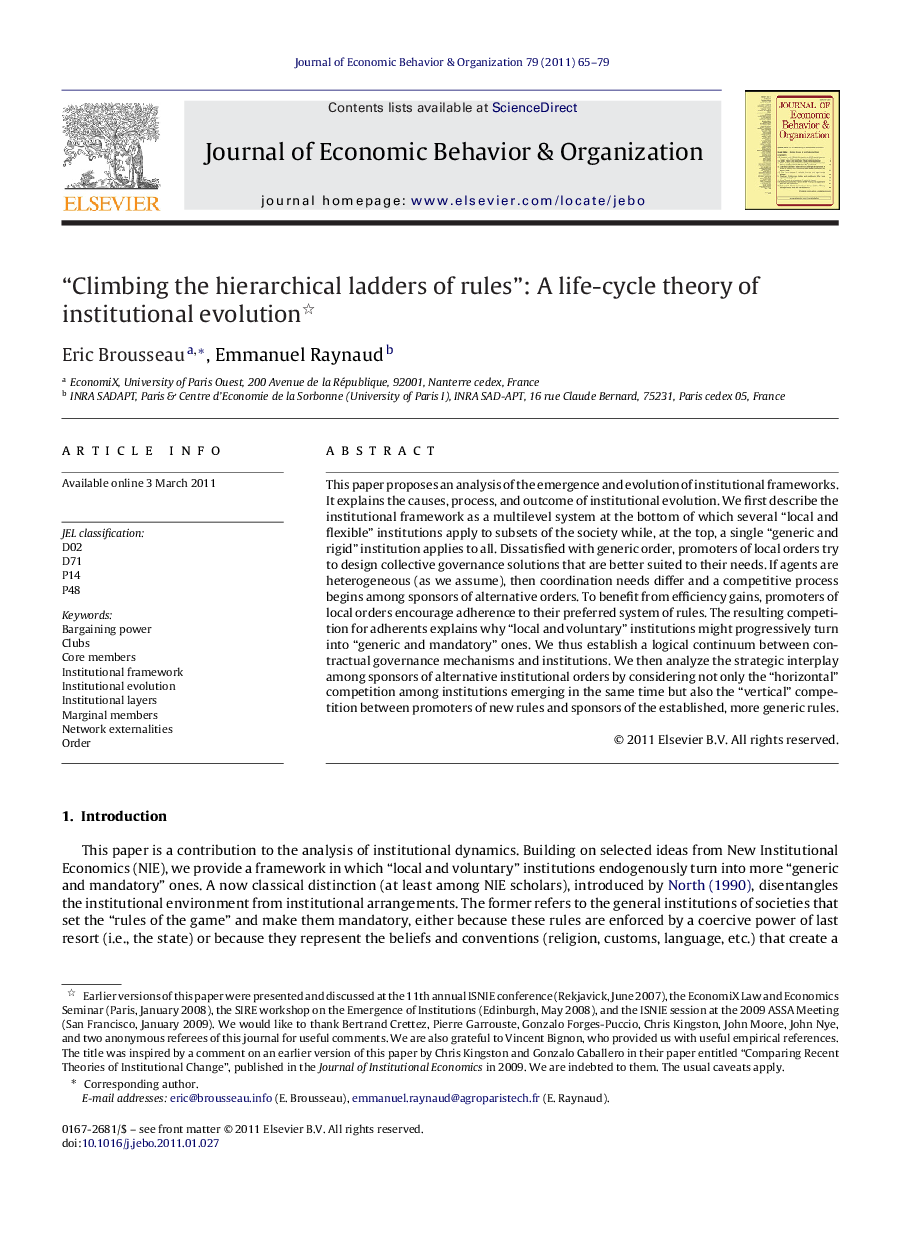| Article ID | Journal | Published Year | Pages | File Type |
|---|---|---|---|---|
| 884053 | Journal of Economic Behavior & Organization | 2011 | 15 Pages |
This paper proposes an analysis of the emergence and evolution of institutional frameworks. It explains the causes, process, and outcome of institutional evolution. We first describe the institutional framework as a multilevel system at the bottom of which several “local and flexible” institutions apply to subsets of the society while, at the top, a single “generic and rigid” institution applies to all. Dissatisfied with generic order, promoters of local orders try to design collective governance solutions that are better suited to their needs. If agents are heterogeneous (as we assume), then coordination needs differ and a competitive process begins among sponsors of alternative orders. To benefit from efficiency gains, promoters of local orders encourage adherence to their preferred system of rules. The resulting competition for adherents explains why “local and voluntary” institutions might progressively turn into “generic and mandatory” ones. We thus establish a logical continuum between contractual governance mechanisms and institutions. We then analyze the strategic interplay among sponsors of alternative institutional orders by considering not only the “horizontal” competition among institutions emerging in the same time but also the “vertical” competition between promoters of new rules and sponsors of the established, more generic rules.
► Agreements implement mutually beneficial while unequal common orders. ► Players sponsor adhesion of their preferred order, initiating competition ► Competitive strategies might request the formalization of institutions. ► Generic institutions are more formalized, rigid and mandatory than local ones. ► They are challenged by emerging ones better adapted to specific (local) needs.
